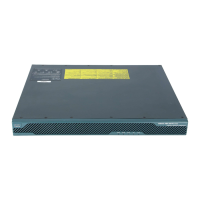64-33
Cisco ASA 5500 Series Configuration Guide using ASDM
OL-20339-01
Chapter 64 General VPN Setup
ACL Manager
In addition, companies with large networks might need to configure more than one proxy server and
let users choose between them, based on transient conditions. By using .pac files, an administrator
can author a single script file that determines which of numerous proxies to use for all client
computers throughout the enterprise.
The following are some examples of how you might use a PAC file:
–
Choosing a proxy at random from a list for load balancing.
–
Rotating proxies by time of day or day of the week to accommodate a server maintenance
schedule.
–
Specifying a backup proxy server to use in case the primary proxy fails.
–
Specifying the nearest proxy for roaming users, based on the local subnet.
You can use a text editor to create a proxy auto-configuration (.pac) file for your browser. A .pac file
is a JavaScript file that contains logic that specifies one or more proxy servers to be used, depending
on the contents of the URL. Use the PAC URL field to specify the URL from which to retrieve the
.pac file. Then the browser uses the .pac file to determine the proxy settings. For details about .pac
files, see the following Microsoft Knowledge Base article:
http://www.microsoft.com/mind/0599/faq/faq0599.asp.
Modes
The following table shows the modes in which this feature is available:
Add/Edit Standard Access List Rule
The Add/Edit Standard Access List Rule dialog box lets you create a new rule, or modify an existing
rule.
Fields
• Action—Determines the action type of the new rule. Choose either Permit or Deny.
–
Permit—Permits all matching traffic.
–
Deny—Denies all matching traffic.
• Host/Network IP Address—Identifies the networks by IP address.
–
IP address—The IP address of the host or network.
–
Mask—The subnet mask of the host or network
• Description—(Optional) Enter a description of the access rule.
Modes
The following table shows the modes in which this feature is available:
Firewall Mode Security Context
Routed Transparent Single
Multiple
Context System
• — • ——

